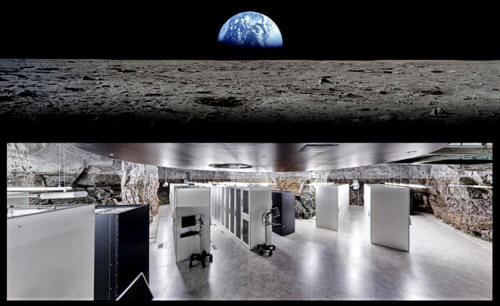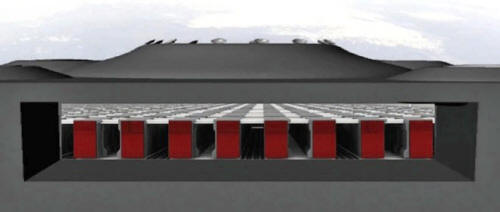|
from Wired Website
Image: Simon Lutrin/Wired
Should we build a supercomputer on the moon?
It would be a mammoth technical undertaking, but a University of Southern California graduate student thinks there’s a very good reason for doing this: It would help alleviate a coming deep-space network traffic jam that’s had NASA scientists worried for several years now.
Ouliang Chang floated his lunar supercomputer idea a few weeks ago at a space conference in Pasadena, California.
The plan is to bury a massive machine in a deep dark crater, on the side of the moon that’s facing away from Earth and all of its electromagnetic chatter.
Nuclear-powered, it would process data for space missions and slingshot Earth’s Deep Space Network into a brand new moon-centric era.
The Deep Space Network is a network of 13 giant antennas located in the U.S., Australia, and Spain that gather data and talk to spacecraft in, well, deep space.
These space missions are already fighting for bandwidth on this overloaded network and most of the data has to get back to Earth for processing. With a lunar supercomputer, Chang says, that could change.
His supercomputer would run in frigid regions near one of the moon’s poles. The cold temperatures would make cooling the supercomputer easier, and allow it to use super-efficient superconductive materials to move around electricity. Although it’s not clear how much water could be found on the moon’s poles, Chang envisions a water-cooled supercomputer.
How much would this Lunar supercomputer cost?
Well, Chang and Thangavelu say it costs about $50,000 per pound to ship materials to the moon. Add to that the cost of digging out and building out the sub-lunar supercomputer center, cooling system and nuclear power generator, and you can easily envision a project in the $10 billion to $20 billion range, never mind the cost of building a lunar base station.
That would easily make it the most expensive supercomputer ever built.
The lunar computer would communicate with spaceships and earth using a system of inflatable, steerable antennas that would hang suspended over moon craters, giving the Deep Space Network a second focal point away from earth.
Chang’s Lunar supercomputer complex Image: Ouliang Chang
Some at NASA agree that there’s a coming Deep Space Network traffic jam.
Back in 2006, the agency’s top networking gurus warned that over the next three decades there will be an,
Space scientists are worried that the existing Deep Space Network hardware is obsolete and just not up to the job of transmitting the growing workload of extra-terrestrial data.
The U.S. space agency is going to have to come up with a plan, the scientists said.
In fact, Chang isn’t the first person to propose putting a big data processing facility on the moon. Back in 2004, researchers at Space Systems Loral described something called the Lunar Data Cache - an extraterrestrial backup system that would keep businesses online in the event of a Sept. 11, 2001-type terrorist strike somewhere on Earth.
The Loral proposal also described a few way-out moneymaking ideas such as lunar rover-deployed billboards, robotic rock-heaving contests, robot wresting, and rover races piloted by NASCAR drivers.
Clearly, the business of dreaming up supercomputers in space is not for those who think small.
Still, after being reported in the New Scientist, Chang’s work has caught the interest of the space community because it addresses a very real and pressing space problem.
And that’s something that could give future lunar missions a very clear and exciting sense of purpose, says his USC’s Thangavelu.
He agrees that there is a growing problem with outer space networking.
Bhasin works on designing advanced space networking technologies, and he says that there are some promising alternative communications technologies - Laser-based networking, for example - that could break the Deep Space Network bottleneck.
Next year, researchers at MIT’s Lincoln Laboratory will test out a 622 megabits per second Laser network that will speed up earth to moon communications fivefold.
The supercomputer-on-the-moon idea was pretty much a natural for Chang, who describes himself as a super-computing geek.
So, will there ever be a supercomputer on the moon?
Though NASA’s Bhasin finds it interesting, he’s really not sure it will ever happen.
|


